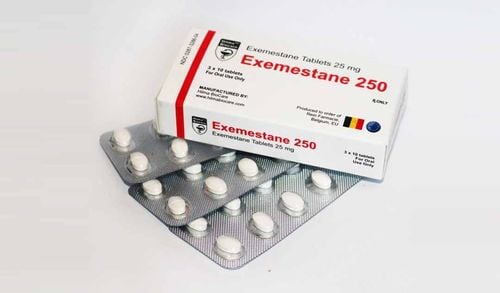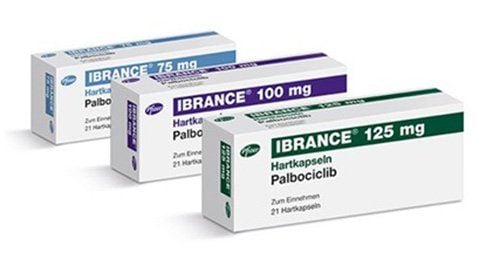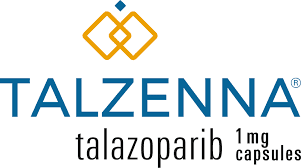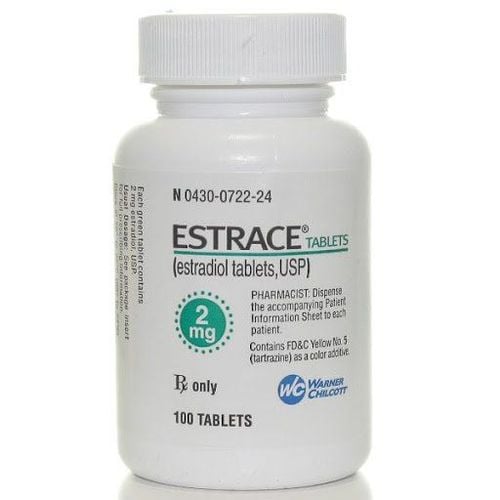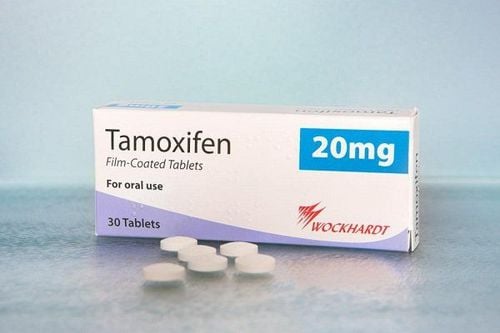This is an automatically translated article.
Epirubicin is made as an intravenous drug or a powder for injection. The main ingredient of the drug is Epirubicin hydrochloride, which is an anthracycline anti-cancer drug.
1. Uses of the drug Epirubicin
What is Epirubicin? Epirubicin is an anthracycline drug that has cytotoxic effects. Mechanism of action of the drug is: Forms a complex with DNA by interleaving between base pairs, leading to inhibition of DNA synthesis, inhibition of DNA-dependent RNA synthesis. Besides, protein synthesis is also inhibited. As a result, the cell is destroyed and prevents cell replication and transcription. In addition, Epirubicin also generates free radicals that are toxic to cells.
Indications for use of Epirubicin:
Treatment of cancer diseases: bladder surface cancer, breast cancer, end stage ovarian cancer, small cell lung cancer and stomach cancer; Prophylaxis of recurrence of superficial bladder carcinoma after vasectomy. Contraindications to the use of Epirubicin:
Patients with hypersensitivity to Epirubicin, anthracyclines, anthrace-nedion or other components of the preparation; People with neutrophil count less than 1.5 x 109/liter (1500/mm3); Patients with liver failure, severe cardiomyopathy, recent myocardial infarction; Patients with severe arrhythmias; Persons treated with anthracycline up to the maximum cumulative dose.
2. How to take Epirubicin
Epirubicin is a very strong tissue irritant and should be administered intravenously (not subcutaneously or intramuscularly). The drug should not be injected directly into the vein, but intravenous infusion of the drug mixed in 0.9% sodium chloride solution or 5% dextrose solution with an injection time of 3-5 minutes is required. If administered intravenously, the infusion time can be up to 30 minutes. Also, the use of supraarticular or distal veins should be avoided. Injections into small veins or multiple injections into the same vein should be avoided (because veins are prone to hardening).
If there are signs of erythema along the vein being infused or the patient has hot flashes, it may be due to the infusion of the drug too quickly, then there may be thrombophlebitis or phlebitis at the site.
3. Dosage of Epirubicin
3.1 In adults For the best treatment results and the fewest side effects, the dose of Epirubicin should be based on the clinical, hepatic, cardiovascular, renal, hematologic response and tolerability of the patient. , in the course of chemotherapy, radiation therapy is being used. Some indications for basic dosing include:
Monotherapy: The usual dose is 60-90mg/m2 injected once, repeated after 3 weeks (the dose can be divided into 2-3 days if necessary). To treat late stage cancer, the dose is 12.5 - 25 mg/m2, once a week; Treatment of breast cancer after surgery with axillary lymph nodes: The initial dose is 100 - 120mg/m2, injected on day 1 of the cycle or divided into 2 equal doses for injection on day 1 and day 8 of each cycle. Repeat this dose 3-4 weeks apart. During therapy, the patient may be given cotrimoxazole or a fluoroquinolone to prevent infection. After the first cycle of treatment, consideration should be given to adjusting the patient's dose based on hematologic and non-hematological toxicity; Treatment of bladder cancer : Perform a drip infusion of the drug into the bladder, infusion every week 50mg in 50ml of 0.9% sodium chloride solution or distilled water to obtain a solution with a concentration of 0.1%, used for 8 days. week. If the patient has signs of chemical cystitis, the weekly dose should be reduced to 30mg in 50ml. For carcinoma in situ, if tolerated, increase the dose to 80 mg in 50 mL/week. To avoid the risk of recurrence in patients undergoing transurethral resection, a dose of 50 mg/week for 4 weeks is recommended. Then, use 50mg once a month for 11 months. Solutions should be kept in the bladder for about 1 hour after being injected; End stage ovarian cancer: Monotherapy at a dose of 60 - 90mg/m2; if combination therapy is used at a dose of 50-100mg/m2; Stomach cancer: 60-90mg/m2 monotherapy; if combined therapy is used at a dose of 50mg/m2; Small cell lung cancer: Monotherapy at a dose of 120mg/m2; If combined therapy is used at a dose of 120mg/m2. 3.2 In other subjects Children: The safety and effectiveness of Epirubicin in children have not been established; Patients with myelosuppression: May be due to strong treatment, pre-existing or cancerous marrow infiltrate, the dose of Epirubicin in the initial cycle should be reduced to 75-90mg/m2; Patients with hepatic impairment: The dose should be reduced. If serum bilirubin concentration 1.2 - 3mg/100ml, AST concentration is 2 - 4 times the upper limit of normal, reduce the initial dose by 50%; if serum bilirubin level > 3 mg/100 ml or AST level 4 times the upper limit of normal, use 23% of the initial dose; if liver failure is severe, do not use the drug; Patients with severe renal impairment: Having a serum creatinine level > 5 mg/100 ml may require a dose reduction. Overdose: Epirubicin is only used in specialized hospitals, so there is little risk of poisoning due to overdose. Overdose symptoms may include: Sore mouth, bloody stools (black or bloody stools), chills, coughing up blood, difficulty breathing, choking, oliguria. In case of overdose, patients receive supportive treatment including antibiotic therapy, platelet transfusion, blood transfusion, cell population stimulators, intensive care until the toxic manifestations disappear. At the same time, it is necessary to carefully monitor because heart failure, low blood cells in patients can occur after many months.
Missed dose: Epirubicin is only used in hospitals, made by medical staff (patients are not allowed to use it on their own) so there is no incident of missed dose.
4. Side effects of the drug Epirubicin
Some side effects patients may experience when using Epirubicin include:
Common: Anorexia, fever, infection, vein irritation or necrosis at the site of extravasation when injected, skin and nails. darkening, mucositis, alopecia, photosensitivity, keratitis, conjunctivitis, pruritus, rash, rash, leukopenia, granulocytopenia (reversible), nausea, vomiting vomiting, diarrhea, somnolence, hot flashes, irreversible amenorrhea, possibly chromosomal abnormalities. Therefore, male patients treated with Epirubicin should use contraception; Uncommon: Sinus tachycardia, abnormal electrocardiogram, anaphylaxis, atrioventricular block, ventricular tachycardia, decreased left ventricular pumping fraction, myocardial damage, congestive heart failure, hyperuricemia; Frequency unknown: Pneumonia, sepsis, acute myeloid leukemia, acute lymphocytic leukemia.
5. Be careful when using Epirubicin
Some notes patients need to remember before and while using Epirubicin:
Children and the elderly when using the drug are at high risk of heart toxicity; Epirubicin is very toxic and requires a specialist to prescribe and supervise treatment. Patients should be informed about the symptoms of drug toxicity (thrombocytopenia, neutropenia, stomatitis, systemic infection) before starting treatment; Before and during treatment with Epirubicin, it is necessary to monitor hematological indicators, heart function, liver, kidney; Monitor for manifestations of myelosuppression (infection, granulocytopenia) and cardiotoxicity (congestive heart failure) due to cumulative doses of Epirubicin (especially in children and the elderly); Discontinue use of Epirubicin at the first sign of impaired cardiac function; Epirubicin is an allergen, so symptoms of mucositis, stomatitis often appear soon after taking the drug, if severe, it can progress within a few days leading to mucosal ulcers. Most patients recover by the 3rd week of treatment; Do not use Epirubicin for pregnant women. People who are taking Epirubicin should avoid becoming pregnant; The mother must stop breastfeeding during treatment with Epirubicin; Epirubicin may cause nausea and vomiting, affecting driving or operating machinery.
6. Epirubicin drug interactions
Some drug interactions of Epirubicin include:
Epirubicin drug interacts with other anti-cancer drugs, increasing effects, mutual toxicity. If used with other anticancer drugs, the dose of Epirubicin should be reduced; Administration of Epirubicin immediately after paclitaxel increases the toxicity of Epirubicin; Concomitant use of Epirubicin and other cardiotoxic drugs has the potential to cause congestive heart failure; Concomitant use of Epirubicin with irradiation may increase toxicity and inflammatory response at irradiated sites; Concomitant use of Epirubicin and drugs affecting the liver may cause changes in liver function (because Epirubicin is extensively metabolized in the liver); Epirubicin reduces the absorption of phenytoin ; Epirubicin inhibits the metabolism of fluorouracil; Cimetidine will increase the AUC of Epirubicin by 50%. Therefore, Cimetidine should be discontinued during treatment with Epirubicin; Concomitant administration of Epirubicin with interferon α 2b may reduce the terminal half-life and total clearance of Epirubicin; Epirubicin hydrochloride causes precipitation with fluorouracil and heparin; Epirubicin is incompatible with alkaline pH solutions; Epirubicin should not be mixed with other drugs in the same syringe. Epirubicin has many potential side effects. Therefore, when using the drug, the patient should follow all the instructions of the doctor and pay attention to keep the spirit of peace and optimism to fight and win the disease.
Please dial HOTLINE for more information or register for an appointment HERE. Download MyVinmec app to make appointments faster and to manage your bookings easily.




